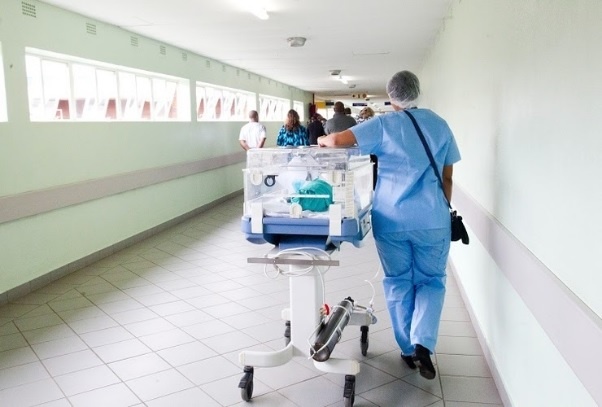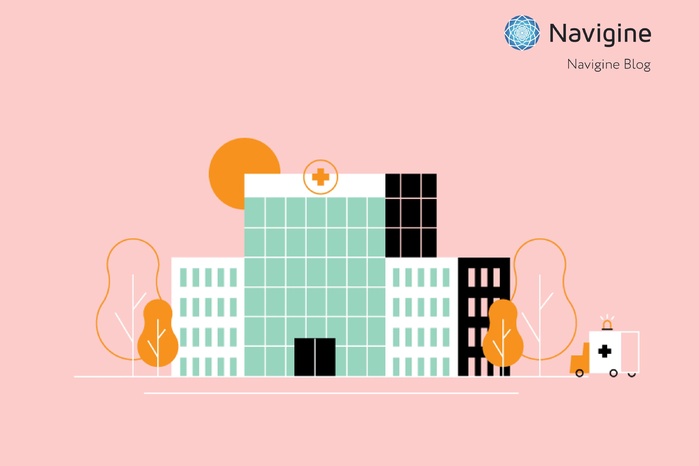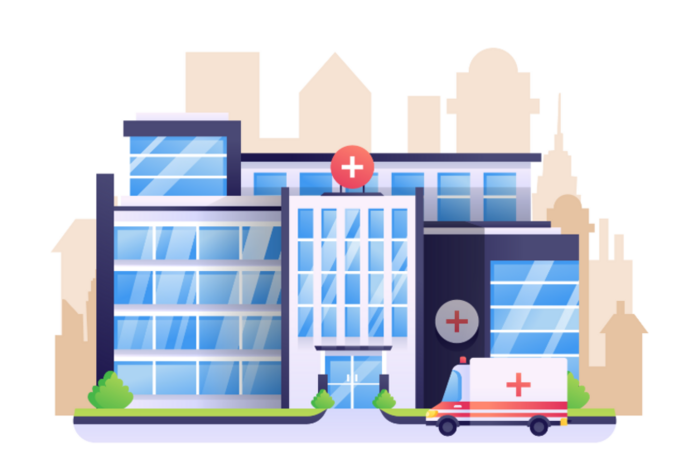Modern real-time location system helps healthcare to work effectively. Thanks to RTLS technology, clinics can track assets and equipment and helps patients with convenient navigation around the place. Earlier we have already addressed the issue of RTLS technology. Here, we’d like to analyze in detail the usage of RTLS in healthcare, mainly, for limiting the spread of Covid-19.
What opportunities does RTLS provide IN HOSPITALS?
In the face of the Covid-19 pandemic, the requirements for medical institutions have significantly increased. To work effectively, hospitals and polyclinics have to implement new technologies, RTLS being one of them.
Medical asset tracking
The system of RTLS asset management makes it possible to know the exact location of some critical medical equipment used for treating Covid-19.
Knowing the number, status, and location of the equipment, the staff can plan how to avoid surges in infected patients and relocate assets where it is necessary. The location of medical equipment can be performed with accuracy from 2.5 to 3 m thanks to the IoT based asset tracking system.
Learn more about the wheelchair tracking system.
Tracking contacts
During the pandemic, tracking contacts is one of the most effective tools used for preventing the infection. Real-Time Location systems in hospitals let institutions detect and track all the places where infected patients could contact the staff, equipment, and other patients. This data gives the personnel the possibility to act quickly to track and contain the spread of the disease.
Staff and visitor navigation
The heat map of the hospital, built using the technology, assists doctors in their work. The map shows any objects located on the territory of the clinic. A user can create the shortest route to them. After installing the RTLS vendor's healthcare system, the hospital managers get powerful solutions for automated contact location, resource optimization, ensuring the safety of visitors. RTLS can be integrated with additional systems, such as video surveillance, which is an additional tool for ensuring patient safety.
Automated collection of analytical data
Significant time and human resource-saving are achieved by automating the process of collecting data on the interaction between visitors and staff, as well as patients and equipment. If an employee has to define the contact with some patient after his admission to the hospital, he can easily launch a report that selects critical information. The report can show which rooms the patient visited, which equipment he used, which staff interacted with the person, how much time each interaction took.
Types of RTLS FOR HOSPITALS
To implement RTLS for hospitals, the company has to decide which technology their project will be based on. Each one has its advantages, specific features, and disadvantages.
Wi-Fi
Wi-Fi system uses tags that transmit the signal to some access points all around the medical institution. The existing wireless network infrastructure can be utilized for RTLS deployment. Speaking about disadvantages, it should be noted that Wi-Fi tags are large, rather energy-intensive, and require a considerable financial commitment.
Bluetooth
Based on Bluetooth, RTLS in healthcare makes use of sensors with batteries that are connected to different access points in the building and transmit information to the cloud. Being Bluetooth® LE-based technology, it allows decreasing the system and operating costs of the hospital and also provides possibilities for asset and patient tracking. Using Bluetooth doesn’t require covering with beacons the whole place. It’s possible to start with either one area or function. The number of readers can significantly improve the location accuracy, thus, many devices are required for increasing the system efficiency.
RFID
RFID uses usual battery-free trackers that are attached to the equipment. Trackers are not expensive and can last practically forever. To make them work with RFID, they have to be placed every 3-5 m. The main problem with the system is its cost. Moreover, the system can face interference in the case of electromagnetic radiation.
Learn more about RFID alternative technologies.
UWB
UWB works with small low-power tags that transmit ultra wide-band signals using spark gap transponders. Radiofrequency modulation, sent by the device, can be detected by UWB receivers located all over the place. The accuracy of signal transmission is up to 1 m.
What should be considered while choosing RTLS for hospitals
RTLS in healthcare offers significant opportunities for tracking patients, medical staff, and equipment. However, when choosing RTLS, a number of criteria considering the needs of a medical institution and the planned budget should be taken into account.
RTLS tasks
At first, define what you need – just detect the proximity of an object or know its exact location. The technologies with lower accuracy of positioning belong to less energy-consuming ones and don’t require high implementation costs but their accuracy is about 3-5 m. High-accuracy methods are more expensive and characterized by complexity in realization but they allow detecting objects with an accuracy of up to 10 sm.
Compliance with costs and budgets
You have to calculate if the selected solution corresponds to the budget of your company. The implementation of real-time location systems in healthcare requires the following expenses:
- purchasing beacons and tags - physical devices transmitting signals for defining asset location;
- expenses on batteries – one has to calculate the energy consumption of one tag and funds necessary for replacing batteries;
- software development with indoor navigation and positioning features;
- integration – some technologies can be easily incorporated into the existing hospital infrastructure, while others need additional expenses on installing beacons, sensors, and readers.
Tracking objects
Decide what you want to track. If not expensive assets are supposed to be tracked, cheap tags are enough to be used. For monitoring costly objects, it’s reasonable to use more efficient and technological tags.
RTLS benefits for hospitals
Theft prevention
According to the statistics, clinics and hospitals lose annually up to 20% of their assets, including various portable devices, such as intravenous pumps, ventilators, and defibrillators. Their disappearance can be connected with usual losses but more often it occurs due to thefts. Small devices can be easily and imperceptibly taken outside the hospital territory.
Using RTLS for hospitals allows finding the lost objects and preventing their leaving the place. The equipment is fitted with special beacons and tags that help define the location of the object and ensure emitting sound or light signals in case of theft.
Notification about equipment inactivity
With the help of RTLS, the medical staff can get information about the availability of unexploited medical equipment in real-time. As soon as any apparatus finishes working, the system makes a notification so that it can be used for another patient. Such an approach makes it possible to avoid medical equipment downtime and ensures timely diagnostic and treatment procedures.
Increasing bed accessibility
If a hospital is overcrowded with patients, managing bed accessibility becomes a vital task. It may happen that there are unused beds inwards but a patient has to wait for ages to get a place. RTLS for hospitals assists in solving this problem. The system constantly monitors the accessibility of beds and immediately informs the staff of a patient’s discharge. As statistics show, the application of this technology lets clinics reduce the time for changing beds by 50%.
Advantages of implementing RTLS in healthcare
The technology of RTLS in healthcare can transform the running of medical institutions for the better by minimizing waiting for time and confusion of patients, simplifying equipment locating, and tracking automatically the key indicators for analyzing working processes. Before taking measures for implementing the system, it’s worth considering the key reasons why managers of medical institutions eagerly invest in RTLS hospital tracking systems:
- Working process optimization for different hospital departments – patients move between wards, doctors’ offices, and labs more quickly and comfortably.
- Improvement in customer service because the clinical staff can find the necessary treatment equipment faster.
- High-quality preventive maintenance and management of equipment.
- Timely implementation of tags into the hospital infrastructure and savings of up to 60% on installment costs.
Navigine is a reliable supplier of RTLS solutions specializing in creating effective geolocation solutions for healthcare. We develop RTLS technology for hospitals and help to implement them into the company’s infrastructure.



